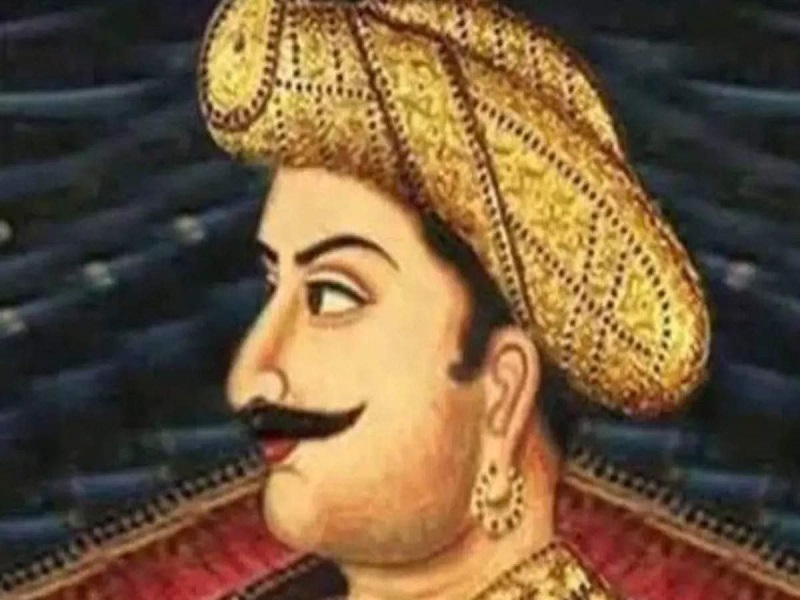
London- A gold jewelled tiger head, which once belonged to the gold-covered throne of Mysore ruler Tipu Sultan in 18th century India, was on Friday placed under a temporary export bar in an attempt to find a UK buyer for it.
The finial, or a crowning ornament, is worth around GBP 1.5 million and the export bar placed by the British government is used to allow time for a UK gallery or institution to acquire the piece of historic value.
The finial is one of eight gold tiger heads that adorned the throne of the ruler, famously known as the “Tiger of Mysore”.
“This fascinating finial illustrates the story of Tipu Sultan’s reign and leads us to examine our imperial history,” said UK Arts Minister Lord Stephen Parkinson.
“I hope a UK-based buyer comes forward so that we can all continue to learn more about this important period in our shared history with India,” he said.
The finial, made of gold and set with rubies, diamonds and emeralds, is described as a rare example of fully documented 18th century South Indian goldsmiths’ work and its existence was unknown until 2009.
Its marble pedestal is unique among the five surviving finials known, and the meaning of its gold inscription is still a mystery.
The decision on the export licence application for the finial has been deferred until February 11, 2022, which may be extended until 11 June 2022 if a serious intention to raise funds to purchase it is made at the recommended price of GBP 1.5 million.
The minister’s decision follows the advice of the Reviewing Committee on the Export of Works of Art and Objects of Cultural Interest (RCEWA), which agreed that it is an important symbolic object in Anglo-Indian history in the last years of the 18th century.
“Tipu Sultan’s golden and bejewelled throne (c.1787-93) was broken up by the British army’s Prize Agents after Tipu’s defeat and death in defence of his capital, Seringapatam, in 1799. This tiger’s head is one of the original eight which were placed on the balustrade of the octagonal throne,” said RCEWA Member Christopher Rowell.
“This tiger’s head, one of four throne finials to survive, including a head in the Clive Museum at Powis Castle (NT), should remain in the country together with the other fragments of the throne, and I hope that every effort will be made to achieve this,” he said.
Rowell explained that each gold tiger’s head from the railing is slightly differently set with gemstones, which makes this example both part of a set and unique in its design.
Its quality attests to the expertise of Tipu Sultan’s goldsmiths and jewellers, in whose productions he took a close personal interest.
The head of the large gold rock crystal tiger which supported the throne, and a bejewelled huma bird which perched on the pinnacle of its canopy, were presented to Britain’s George III and Queen Charlotte.
“The tiger and its stripes were Tipu Sultan’s personal symbols. ‘Better to live one day as a tiger than 1,000 years as a sheep’ he famously declared. His flirtation with Napoleonic France led to his downfall at British hands,” added Rowell.
Tipu Sultan was regarded as the greatest threat to the British East India Company until his defeat and death in 1799.
As ruler of Mysore, Tipu identified himself and his personal possessions with tiger imagery and experts believe this finial offers scholars the opportunity to illustrate the vibrant culture of Tipu Sultan’s court and closely examine British imperial history.
Three surviving contemporary images of the throne are all in the UK.
Tipu’s defeat had great historical significance to Britain’s imperial past, leading to a contemporary fascination with Tipu’s story and objects.
Following his defeat, many objects from Tipu’s treasury arrived in Britain, where they influenced poetry (John Keats), fiction (Charles Dickens; Wilkie Collins), artists (J.M.W.Turner) and attracted much public interest.
The RCEWA made its recommendation to ministers on the grounds that the finial’s departure from the UK would be a “misfortune” because it is so closely connected with UK history and national life and is of outstanding significance for the study of royal propaganda and 18th-century Anglo-Indian history.
Follow this link to join our WhatsApp group: Join Now
Be Part of Quality Journalism |
Quality journalism takes a lot of time, money and hard work to produce and despite all the hardships we still do it. Our reporters and editors are working overtime in Kashmir and beyond to cover what you care about, break big stories, and expose injustices that can change lives. Today more people are reading Kashmir Observer than ever, but only a handful are paying while advertising revenues are falling fast. |
| ACT NOW |
| MONTHLY | Rs 100 | |
| YEARLY | Rs 1000 | |
| LIFETIME | Rs 10000 | |










